
For Those About to Rock: AC/DC Live
The Black Ice tour rolled into town like some ball-busting, jail-breaking, TNT-laden locomotive. AT takes the white-knuckle ride.
For Paul ‘Pab’ Boothroyd this is his third AC/DC tour as FOH engineer. And he can hear the question coming before you even ask: “Yes, the show is loud.” But not just loud, it’s ballistically, bombastically, ball-tearingly loud.
Pab Boothroyd: Let’s face it, as soon as AC/DC announces they’re going to tour, city councils the world over begin to sweat. We can be playing to over 200,000 people in a city like Melbourne or Sydney – that’s a lot of business, a lot of revenue for the local area, for the building and for everyone concerned. So everyone wants the show – they know it’s going to go well, it’ll sell well and everyone’s going to be happy. Then you get the inevitable: ‘ah, but we have to watch the volume’. It got to the point where the promoter had to be dead straight and tell people: ‘Here’s the deal: there are two things you need to be aware of and okay about for us to do this show: 1. We run it loud, and 2. The band smoke cigarettes. We all know the politically correct world we live in today, but if there are any problems with those issues then we simply won’t come.’ The ‘cigarette clause’ speaks for itself, but the reasons for running the show loud are: the fans expect the volume, and the band’s sound is created by the volume.
GO HARD OR GO HOME
At the very least Pab’s words come across as unapologetic, at worst, defiant. Not so. Pab is a professional and a pragmatist. He has a job to do and he does his level best to do it well – in fact, many would suggest there’s no one better suited for the task. And his job isn’t about pushing faders up to the threshold of pain and cranking the subs in a way that may bring down a passing Airbus.
PB: Even if I turn off the PA I guarantee in some buildings we’d still be over the supposed ‘speed’ limit. Having that wall of Marshall cabs means there are plenty of mid-band frequencies so favoured by A-weighted SPL meters – the big dB numbers are nothing to do with big old subs. So the noise police can come in here with an SPL meter and point it at the PA from the mix position and as soon as Angus and Mal fire up, their needles are going to be tripping pretty high.
Christopher Holder: Right. I notice you’re flying EAW SB1000 subs. Is that a strategic decision?
PB: The band doesn’t like the stage being shaken too much with masses of sub bass. I went to the rental company and asked for the EAW SB1000. I want a punchy bass, I don’t need anything under 40Hz, I just want to move air with the kick drum. I don’t want to be rattling the building and stage with sub frequencies.
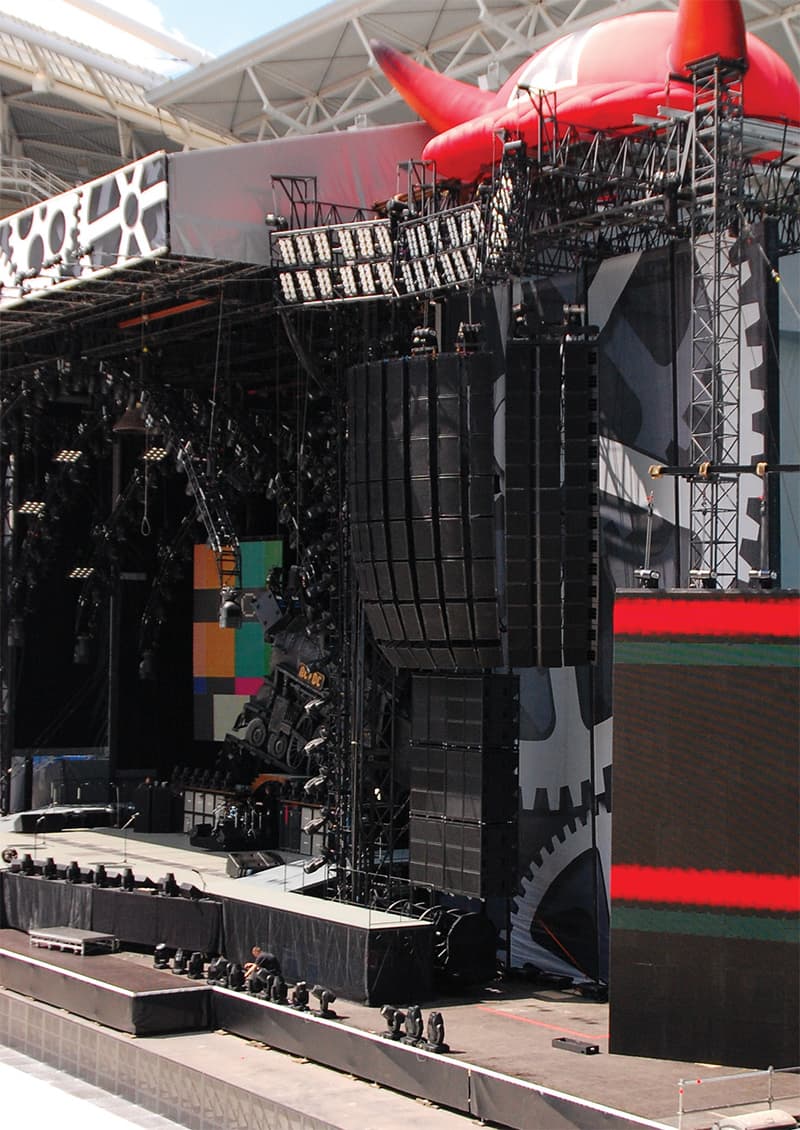
NEW TOUR, OLD GEAR
CH: Last time we talked [Issue 14] you were using EV X-Array and 10 years later you’re still using X-Array. Does that apply across the board – using the Stiff Upper Lip setup as the basis for this tour?
PB: It may look like not much has changed since the last tour, when in fact the whole thing has been totally reworked, from the preamps through to the PA design.
CH: Can you take us through what’s changed?
PB: I worked with Malcolm and Angus [Young] when they were writing the Black Ice album between tours. Mal, Angus and I would spend hours talking about gear, and Mal is a big analogue fan, especially of all things Neve. In fact, after our discussions it became apparent he would be very happy if we could tour a Neve. Well, that was never going to happen. Other options included using Neve mic pres under the stage and pushing line level to front of house. That was impractical as well. But I had another idea.
I have a long history with Concert Sound in the UK. These guys are traditionally big Midas console fans as well as being occasionally involved in the development of new designs for the company. When I first started with Concert Sound, bands like Dire Straits were big and getting bigger. The way technology was advancing they were requiring fancier items of gear. So by around 1985 they had a pair of custom Midas consoles built for the bigger touring bands of the time. These two Midas Pro40s were in use for many years before they were finally retired when they weren’t keeping up with modern demands for huge numbers of auxes, buses, matrixes and inputs. One got sold off and is still used in Europe to this day, the other was put on its belly and laid to rest for many years in the warehouse.
A few years ago I said to Concert Sound, ‘don’t sell that desk, I’ve got plans for it’, and it sat around for a couple more years until I told them it would be perfect to go out with AC/DC.
So we pulled the old Pro40 out, refurbished it and it became the touring ‘Neve’ console… or as close as we could get, in that it has similar transformer-based inputs from the period, all hand built, top components of its type and gold connectors everywhere – it’s a gem of a console. The Pro40 became the heart of the new system, which Mal was very pleased about.
CH: Brilliant. But does that mean you’re using copper multicore from FOH to stage?
PB: Ah, no… and I’ll tell you why. When we went to choose our backup console, I wanted something far more recent. I was going to take out the trusty Midas XL4 like I’ve always used – it’s still my analogue console of choice – but we knew we were going to have multiple support bands around the world so we decided the second console would be the new Midas Pro6.
And, like you mentioned, in production rehearsals we started with an analogue mic splitter, but we were having a few issues with induced noise with all that copper. At the 11th hour, just prior to hitting the road, I looked into an alternative. I knew I needed a splitter with lots of outputs – one for me, one for monitors, one for an OB truck etc – but the Pro6 stage box was a bit limited compared to the XL8. Why didn’t I just use an XL8? I didn’t want the larger footprint and I didn’t need the extra functionality. Midas offered to do a software rewrite and allow the Pro6 to go via the XL8 mic pres, which gave us two digital and two analogue outputs and an extra split.
We quickly grabbed the XL stage box and had that talking to the Pro6. We added a Pro6 to monitors (for visiting band engineers) and that became another big plank of the system. John Lewis, our monitor engineer, uses a Midas Heritage 4000 so it’s a full-blown Midas system, all working well together and working well to this day.
We don’t just turn up, push the faders all the way up and say,‘f**k you, this is AC/DC’
The AC/DC FOH position showing the new and the old of Midas (the Pro6 digital console for the support acts and the venerable Pro40 running the main show).
CONSOLE SPEC
CH: If we can go back to the Pro40 for a minute, what’s the spec of that console?
PB: The Pro40 is a 33-channel mixer. That’s an odd number, but it’s the way the bay sizes worked out, with the patchbay at the end of the frame. There are 12 subgroups, four matrixes, and four auxiliary sends. They had this one modified before it was retired. They took out almost all the VU meters and replaced them with four more auxiliaries. So where there used to be a meterbridge, there’s now a bank of aux sends.
They did the mods around the time LED meters were starting to be more prevalent. So the LED ramp meters that became the subgroup and master section meters could all be jammed together at one end. One VU meter was left for PFL’ing, because the LED meters were quite basic in those days – they used to step in a couple of dB jumps, nothing smooth.
CH: Eight auxes might have been big news 20 years ago but is pretty basic by today’s standards.
PB: For sure. When I’m out with Paul McCartney I use a Digidesign Profile, and the Pro40 is quite rudimentary by comparison. But it’s fine for AC/DC. I knew the input count wouldn’t change and 33 channels would be adequate, even after mic’ing the cymbals – all seven of them!
CH: Seven mics on the cymbals? No overheads then?
PB: I mic them from underneath [Audix Micro-Ds with modified ‘bendy clips’]. It’s not the kind of show where you can put up a nice pair of AKG 414s for overheads. With the volume that’s coming out of the drum fill and the guitars – with all those Marshalls cranked to 11… none of it’s for show, it’s all plugged in – you’d never hear the splash of the cymbals.
Harry Witz established DB Sound back in 1979. His Chicago-based rental company has had a relationship with AC/DC dating back to the late ’80s. More recently DB Sound was bought out by the monolithic Clair (by the way, ‘Clair’ is no longer ‘Clair Brothers’ – Roy and Gene Clair are no longer involved).
CH: Last time AC/DC toured they went out with a lot of EV X-Array – which despite its name is a horn-loaded PA rather than a line array – has much changed?
Harry Witz: X-Array is one of the last holdouts of an actual horn-loaded system. And a horn-loaded system has a different character to it. We’ve got some customers with DB who have gone and tried line array systems, and it’s not that one is any better than the other, but they do add a different character and some clients want to go back to that traditional type of system.
CH: So what is Pab and the band liking about a conventional rig like the X-Array?
HW: The band likes a big PA and the set design utilises it as part of its big rock ’n’ roll look. From a system point of view there are some advantages. For example, that big wall of PA actually works much better outdoors than a line array when a wind is blowing. Line array, with its one cylindrical ribbon of sound, is more susceptible to having its sound blown around than a conventional PA with its multiple sources.
CH: But the rig isn’t all X-Array is it?
HW: No, not on the sides. We used to use X-Array on the sides, but we’ve now opted for a line array, the Clair i5.
CH: And why’s that?
HW: The front PA trim is pretty much at the same height every show – you go into bigger or smaller places and the angles of coverage don’t change that much but to the sides it can change drastically.
X-Array, although it can easily wrap downwards and adjust downwards, doesn’t really point up very well. Whereas with a line array, you can come into a place that’s got low seating or very high balconies, shoot the room with a laser and put it in the program and say, ‘Here’s how to pin it guys’. So we achieve the same coverage every night but with quite a few changes to the PA.
CH: Does the sound of the horn-loaded X-Array suit the AC/DC sound better?
HW: I believe so. People talk about a line array’s superior throw, but a system with a 90° or 120° horizontal dispersion pattern sounds a lot different to a horn-loaded box with only a 40° pattern.
The horn-loaded box is more in-your-face.
Interestingly, the X-Array has 12-inch speakers in the mids. It just so happens that Angus’s five stacks of Marshalls and Malcolm’s three stacks of Marshalls all have 12-inch speakers in them, so what better way to reproduce their sound than with 12-inch speakers rather than a bunch of little 6s or 8s?
CH: But we’re always told that line array has it all over horn-loaded PAs when it comes to tight control and being able to fine-tune the rig. Which makes me wonder about the challenges of this tour’s long catwalk out into the crowd and keeping the PA away from that.
HW: Ah, I want to explain that. When you’ve got a line array you have this wide, 90° horizontal throw pattern that you have no control over. You can only control things in the vertical domain and that is done mostly by the angles of the boxes. But, horizontally, you get what you get.
Now if you look at our X-Array system, we have columns of speakers that distinctly hit different sectors of the room and each pair of boxes can be shaded and adjusted remotely from our tablet PC [the system uses Dolby Lake Processors talking to XTA DP226 system controllers]. So the X-Array that’s adjacent to the catwalk can be shaded down in the high end so we don’t get feedback there.
Once the rig is pointing over the catwalk we can apply more power to it so it throws beyond the catwalk. It’s a multi-cellular approach and it can be fine-tuned way beyond a line array. Otherwise you’re stuck with what’s happening left to right on a line array… there’s no way to adjust it.
CH: So do you dynamically change that shading and beam steering as Brian Johnson is walking out into the crowd? Or do you set it such that it works well regardless of whether he’s halfway down or all the way down the catwalk?
HW: There are a couple of presets. Mostly it’s for when Angus goes out to do his guitar solo, so he can hear what he wants when he’s a good 50 metres from his Marshall cabs and wedges. Because at that point Brian is not out there singing so there’s a different high-frequency balance going on out there.
Basically, Angus has to hear it clean and clear so he can play, and Brian’s running out there with in-ear monitors, so you don’t have to be blasting that high-end onto the catwalk, not to mention it being a real trigger for feedback anyway. So there are things about this PA – more than just the character or ‘wall of sound’ look – that make it a good system for what we’re doing.
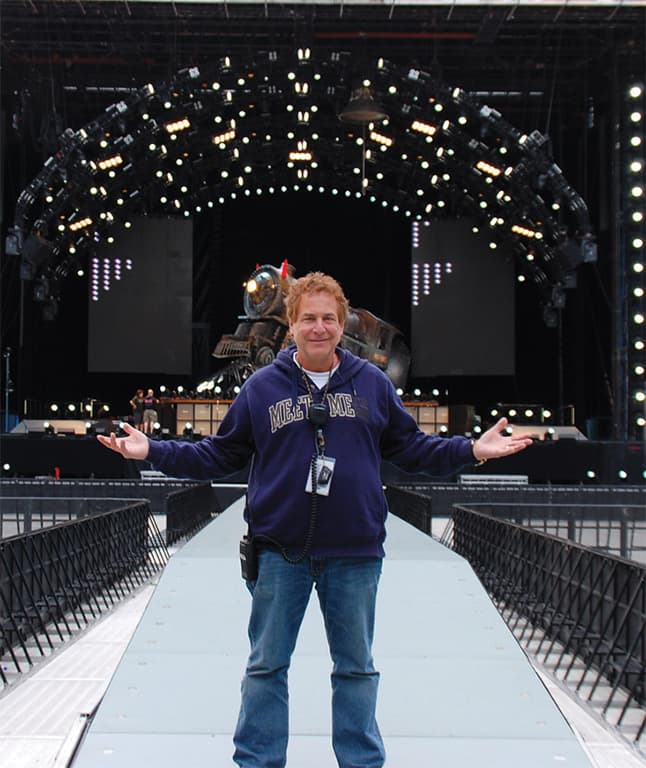


NEW AND OLD MICS
CH: Tell us a little more about your inputs from stage.
PB: I’m using some old favourite microphones and some new ones. As the years go by there are better mics – higher quality, that travel better and offer better rejection. I started using Audix microphones on McCartney and practically the whole drum kit is now Audix.
I have a D6 on the bass drum along with a Shure SM91 in there. The 91 is the ol’ faithful… its tighter controlled sound is great for monitors, meanwhile the D6 gives me the big skin punch. Then I have a pair of Audix i5s on the snare, top and bottom. Actually I have a third mic, a Shure SM57 that feeds Phil Rudd’s ears – it just seemed to suit his hearing and the way we’re sending it to him. He has a drum fill behind him, a pair of in-ears, and a wedge either side as well – all turned up to 11.
As far as the vocal mic is concerned, Brian Johnson and myself are big fans of the Shure Beta 58a.
The backing vocals are Shure Beta 57s.
I have two channels each for the bass and lead guitar – an iso cab under the stage and a stage mic [Audio-Technica AT4047], while for bass I have an iso and an Avalon U5 DI.
CH: Do you judge your microphones differently when you know they have to withstand excessive stage volume?
PB: You have to mic this band with a few things in mind. The first is audio quality and will it do its job, but equally important is the mic’s rejection qualities. You’ve got to try and get some separation, otherwise you’ll just have guitar in everything – especially with Brian Johnson roaming the stage with his handheld mic. Johnno is a great singer with a very distinctive voice, but his is not a massively powerful voice. And the style of his singing and the frequencies in his voice don’t give you a lot of gain to punch through in a mix.
We’re all getting on too don’t forget, and Brian’s into his 60s. He’s still a fantastic performer, but his vocal gets weaker as the show progresses and the gain goes up on the microphone to compensate – that’s not only for me out front but also in the stage monitors. And suddenly you have what’s like a super-sensitive, high-gain overhead microphone on stage walking in and out of pockets of intense guitars and drums. So a mic’s rejection characteristics are quite critical.
VOCAL EQ
CH: I notice you have some GML 8200 EQ in your rack. Is one of those assigned to Brian Johnson’s vocal?
PB: It is. The Midas Pro40 is a great-sounding console, but the facilities are limited and that includes the EQ. The basic Pro40 EQ doesn’t give you the same control as the XL4, which is a very accurate analogue EQ.
So I thought, what am I going to do here? For drums, dialling in a bit of top, a bit of bottom, scooping out a bit of mid… all those kinda things are very straightforward on the Pro40, but for the vocals I’d need a little more control. So I’ve got the GML EQ for that.
I’ve also inserted the GML on bass guitar to clean things up – if there’s a bit of 100Hz floating about the room on the night, I can notch it out. And the other two GMLs are on the backing vocals, because Mal and Cliff aren’t powerful singers – they have a small-banded delivery – so I just notch out bad spill frequencies.
CH: So a lot of the EQ technique is about notching out what you don’t want the mic to be hearing?
PB: Right. With the GML doing its thing, when you gain things up you’re not getting a bunch of harshness and secondary mids, which make it sound grainy and dirty. That’s what makes the GML a great unit – it’s very accurate.
From there, in Brian’s vocal chain I gang the GML to the Summit TLA100 compressor. For the backing vocals I have the dbx Blue Series 160s. The Blue Series are also in the chain for the bass. For drums I use Drawmer DS201 gates.
There are two things you need to be aware of and okay about for us TO do this show: 1. We run it loud, and 2. The band smoke cigarettes
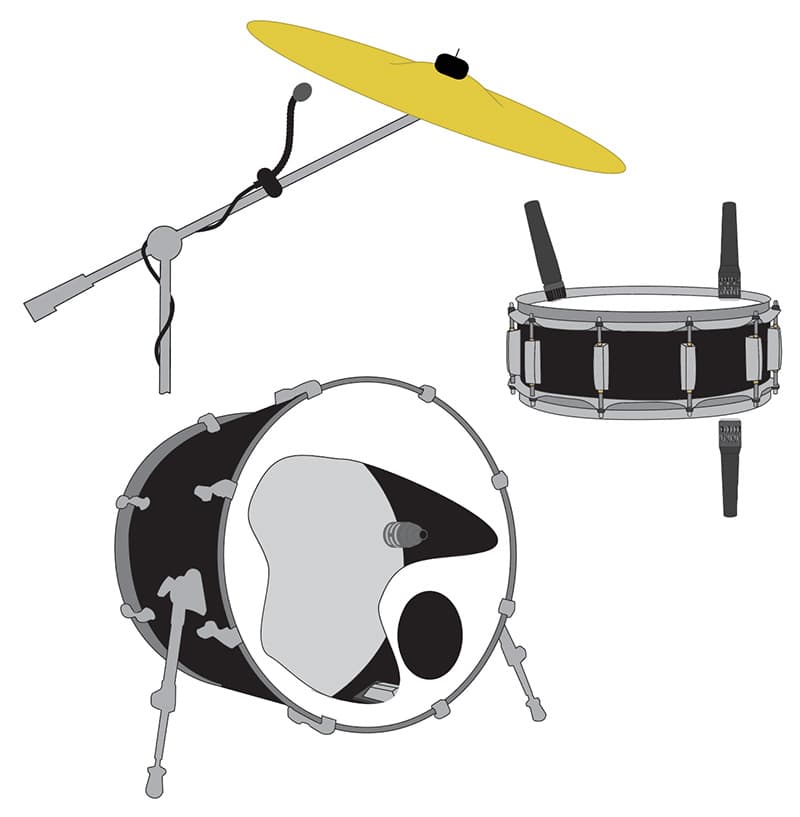
SECRET SAUCE
CH: I imagine a man in your position will be tossed bundles of potentially useful toys to try out. Anything that’s made the grade?
PB: We’ve tried various bits and pieces along the way. One thing I’ve found to be really handy, certainly being in the analogue world again, is the use of a phase alignment tool, notably the Phazer Bank by Radial Engineering. It especially helps me find the sweet spot when combining the kick drum mics. Practically, that means moving the Shure SM91 until it’s in phase with the Audix D6. I can view that on the Radial by sticking it on the 91. It’s sitting on the bottom of the drum and we now know where to put it in relation to the D6, which is mounted inside the drum.
I’ve also got a Waves Maxx BCL, which is like a mastering device for PAs. We’ve used it with success and not used it with success. At a gig where the low end is particularly weird and needs tightening up I just tweak it on the BCL. Other than that, it’s a very straightforward system.
BRAND NEW AND OLD
CH: You say it’s straightforward, but I’m still a little intrigued with the XL8 stagebox/Pro6/Pro40 hybrid setup going on. How do you go using the mic pres on the XL8 stagebox and then the pres on the Pro40?
PB: The XL8 mic pres have a thru-pass state, where there’s no gaining going on. When we listened to it in conjunction with the Pro40, it just added something – just came together nicely. So it’s double mic pre’d, yes – I go in mic level at the back of the desk and I use the mic pres on the Pro40 – but I can’t hear a massive addition, certainly not on such a high-octane show as this one.
The stage box has recall functionality. Four bands a night use it the way they want to use it – they gain up their mic pres for their own mics. We then use the Pro6s to tell the stage boxes to go into a non-gain state, a transparent thru-pass state. Meanwhile, for the monitors, that’s just a straight analogue split to the Heritage 4000.
CH: Visiting engineers must get a surprise when they see AC/DC’s FOH board.
Is it a case of ‘Pab, what the hell have you got here?!’
PB: They don’t! Actually, they do initially, and then say, ‘that’s just so cool.
It’s just so nice to see that kind of thing again.’
It is great to use a console like the Pro40 again. But on my other day job, which is Sir Paul McCartney, I couldn’t even think about using something like it.
I need too many inputs, aux sends and the like, so I use a Digidesign console.
Basically I look at a job and say to myself, what do I need to do this job? If I want to go scrambling I get a scrambler, and if I want to go road racing I’ll get a racing bike. Both have wheels and an engine, both burn petrol, but they’re each designed for totally different applications. I’ve always tried to follow that as much as possible. I couldn’t get a Neve this time, but the old girl has done the trick.
CH: And has the old-school mixer reminded you of how you were mixing in the ’80s?
PB: The band doesn’t do a soundcheck, so the show starts and it’s like ‘holy f**k here we go’. And, yes, the desk has got the character, but because it’s so basic, once the show starts you don’t jump all over it and start sweeping filters and slicing out frequencies. In fact, I do very little other than ride a few things and give them a little tweak. The thing we do change a lot at the beginning of the show is the PA.
I work very closely with Chris Nichols, my system engineer.
CH: And again, going back to our original theme, that’s all about controlling the sound, and not just cranking it.
PB: That’s right. We go to great lengths. Another example: the stage is especially braced. It’s a rolling stage but has dead legs so it can be anchored to the ground.
It has acoustic dampening panels that sit under the stage. We baffle it with curtains – we hang heavy drapes at the back of the stage to keep the sound in. We’ve gone to great pains and expense.
We don’t just turn up, push the faders all the way up and say, ‘f**k you, this is AC/DC’.


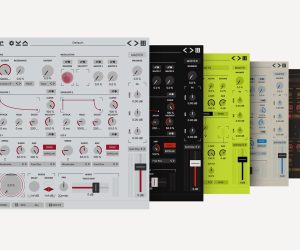
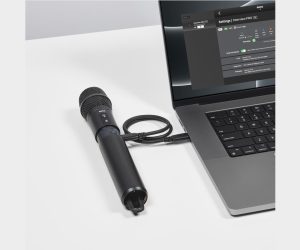
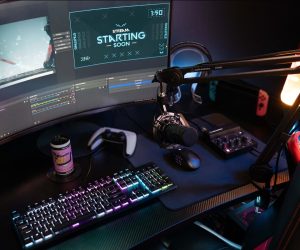
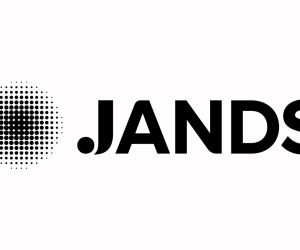
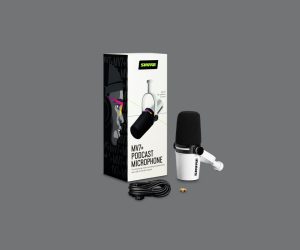
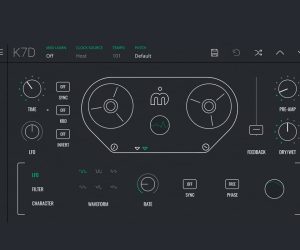
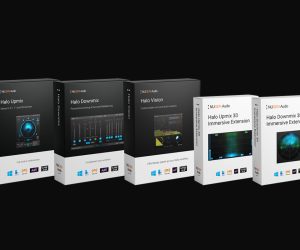
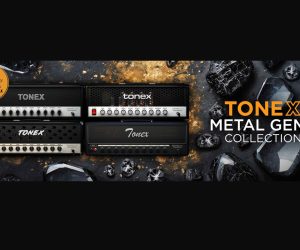

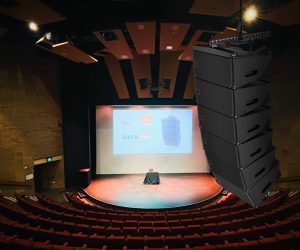




RESPONSES